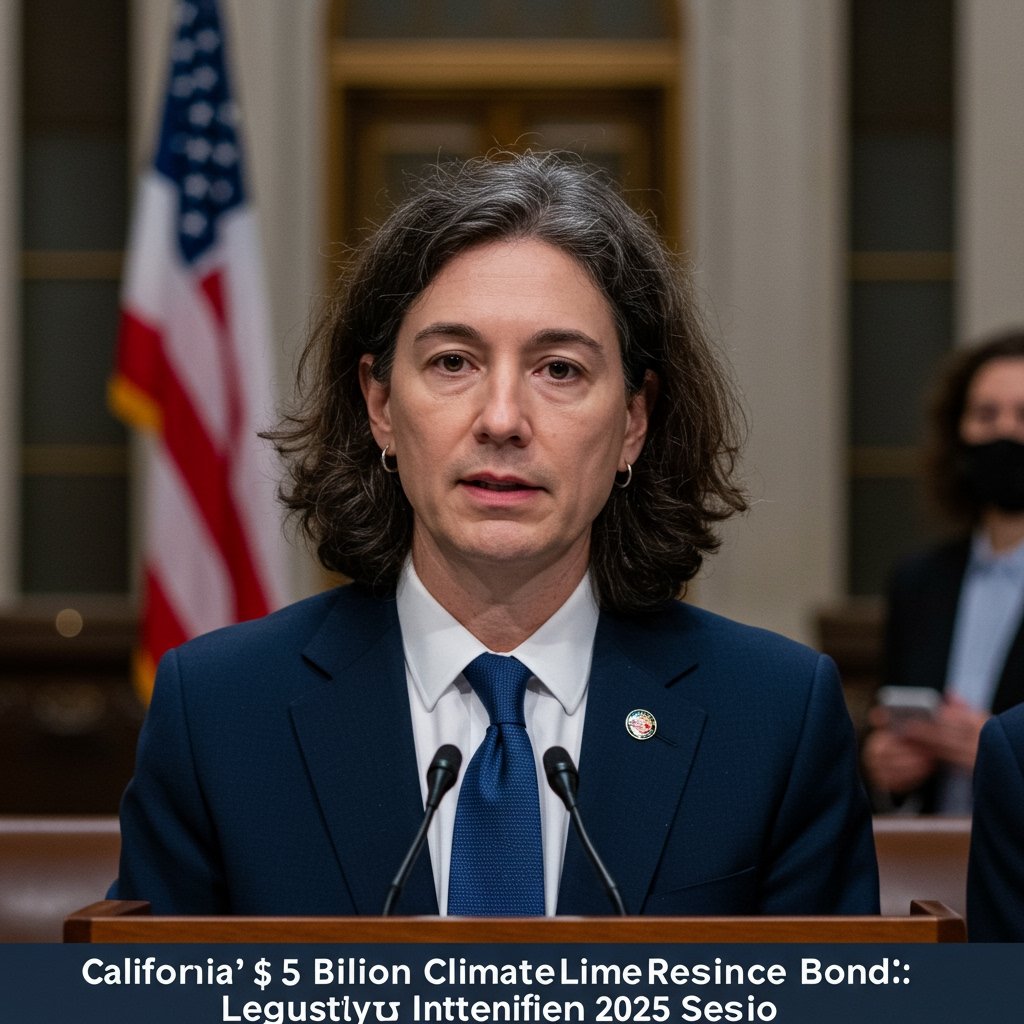California Legislature Engages in High-Stakes Debate Over $5 Billion Climate Resilience Bond
SACRAMENTO, CA – As the 2025 legislative session gets underway in California, a critical and potentially transformative proposal championed by Governor Gavin Newsom’s administration has quickly ascended to the forefront of policy discussions: a substantial $5 billion climate resilience bond. This ambitious measure, designed to bolster the state’s defenses against the escalating impacts of climate change, is currently under intense scrutiny and active debate within the California State Legislature. The proposal arrives at a time when California faces persistent threats from wildfires, rising sea levels, and volatile water supplies, underscoring the perceived urgency of significant investment in protective infrastructure and programs.
The Scope and Ambition of the $5 Billion Proposal
The core of the bond package is a proposed allocation of $5 billion earmarked for a range of vital projects aimed at enhancing California’s resilience. The administration’s vision encompasses key areas deemed most vulnerable to climate-related threats. A significant portion of the funds is intended for wildfire prevention initiatives. This includes crucial activities such as forest thinning, fuel break creation, and community hardening projects designed to protect lives and property in high-risk areas that have suffered devastating losses in recent fire seasons. The bond also targets coastal adaptation initiatives, a necessity for a state with a vast and populous coastline increasingly threatened by rising sea levels, erosion, and storm surges. Planned investments include funding for projects ranging from nature-based solutions like wetland restoration to potentially hardened infrastructure where necessary to protect critical infrastructure and communities.
Furthermore, the bond package prioritizes vital water infrastructure upgrades. California’s water system faces complex challenges, including adapting to changing precipitation patterns, managing drought cycles, and ensuring reliable water supplies for agriculture, urban areas, and ecosystems. Proposed projects could include investments in water recycling facilities, storage enhancements, groundwater management programs, and upgrades to aging conveyance systems. The sheer scale of the $5 billion proposal reflects a recognition within the Newsom administration and among many proponents that the costs of inaction on climate resilience far outweigh the investment required to proactively address these challenges.
Legislative Scrutiny and Key Points of Contention
The bond measure’s introduction into the legislative process has immediately triggered rigorous debate among lawmakers. While there is broad bipartisan agreement on the need for California to enhance its resilience to climate impacts, the specifics of the $5 billion bond proposal have become points of contention. Discussion among legislators centers on several key areas. Paramount among these is the specific allocation of the $5 billion – how much funding should go to wildfire, coastal, and water projects, and what sub-categories within these areas should receive priority? Lawmakers are scrutinizing the proposed distribution to ensure it aligns with the state’s most pressing needs and offers equitable benefits across diverse regions of California.
Another major area of focus is the criteria for project approval. Legislators are seeking clarity and transparency on how projects will be selected, evaluated, and funded under the bond. Questions are being raised about the process for identifying eligible projects, the metrics for success, and how to ensure funds are spent effectively and efficiently. Concerns about potential bureaucratic hurdles or political influence in project selection are part of the ongoing dialogue. The legislative process, involving hearings in various policy and fiscal committees, is designed to flesh out these details and potentially amend the proposal to build consensus.
Overlaying these debates is the fundamental consideration of the overall impact on California’s fiscal health. A bond measure, by its nature, involves borrowing money that must be repaid with interest over an extended period. While bonds are a common mechanism for funding large infrastructure projects, they add to the state’s overall debt burden. Legislators are grappling with the long-term fiscal implications of adding $5 billion (plus interest costs) to the state’s balance sheet, particularly in light of other existing state obligations and potential future economic uncertainties.
Stakeholder Perspectives: Support and Concern
The proposed climate resilience bond has elicited varied responses from key stakeholders across California. Environmental groups have largely voiced strong support for the bond’s goals, emphasizing the critical need for urgent investment in climate adaptation and mitigation. They argue that the bond represents a necessary step to protect California’s natural resources, ecosystems, and vulnerable communities from the worsening effects of climate change. These groups often highlight the scientific consensus on climate change and the economic and social costs of inaction, positioning the bond as a forward-thinking and essential investment in the state’s future security and sustainability.
Conversely, some fiscal conservatives and watchdog groups have raised concerns, primarily centered on the issue of increasing state debt. While not necessarily disputing the need for resilience projects, these groups express apprehension about the long-term financial burden associated with adding another $5 billion in general obligation bonds. They advocate for cautious fiscal management, exploring alternative funding mechanisms where possible, and ensuring that any bond funding is tied to demonstrably effective and cost-efficient projects. Their arguments often focus on the impact of debt service payments on future state budgets and the potential constraints on funding for other state priorities. The debate reflects a classic tension in public finance between the need for significant capital investment and the imperative of fiscal prudence.
The Path Forward: Anticipating a Key Vote
The legislative process for a bond measure is typically complex, involving multiple committee hearings and votes in both the State Assembly and State Senate before potentially reaching the floor for a final vote. As the debate intensifies early in the 2025 session, legislative leaders are navigating the diverse viewpoints and working towards a potential compromise that could garner sufficient support for the measure to advance. The discussions currently unfolding in policy and fiscal committees are critical in shaping the final language and scope of the bond proposal.
A key vote is widely anticipated in the coming weeks as the bill progresses through its initial legislative hurdles. The outcome of these early votes will signal the level of support the bond measure holds and indicate whether it has a viable path forward in the current session. If the bond successfully navigates the legislative process, it could ultimately be placed before California voters on a future statewide ballot, as is typical for general obligation bonds of this magnitude. The decision facing lawmakers is significant: balancing the urgent need to fund climate resilience projects against the long-term fiscal implications of adding substantial state debt, a decision that will have lasting impacts on California’s environment and economy.



















